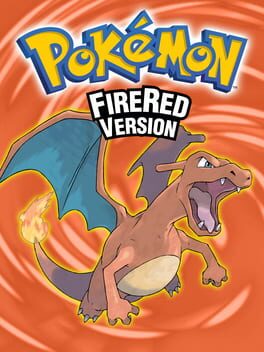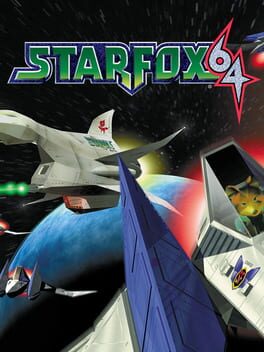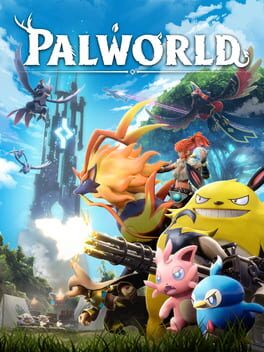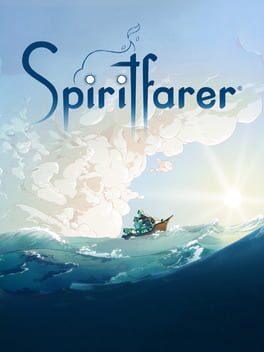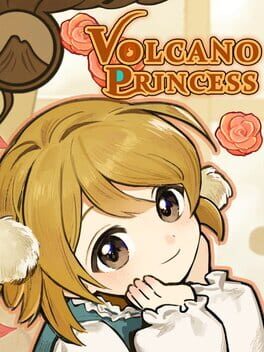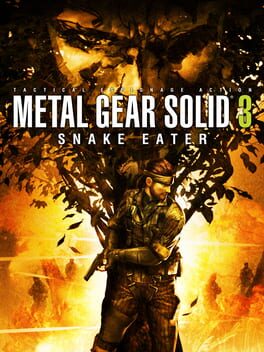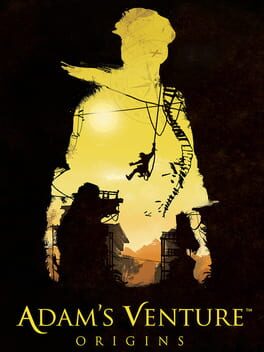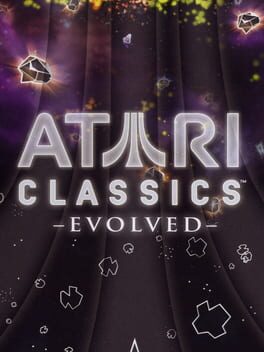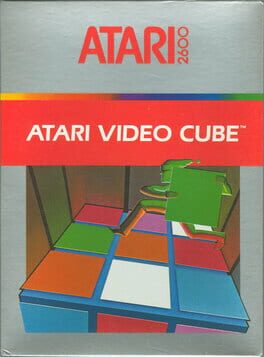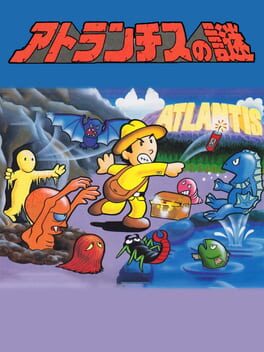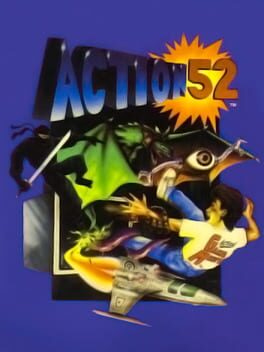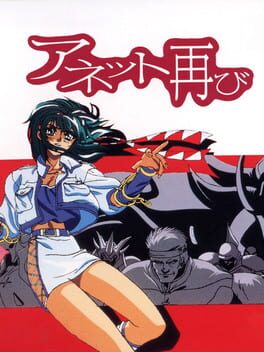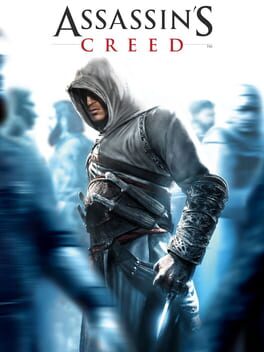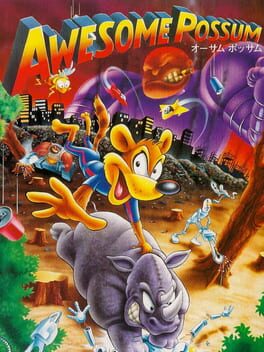15 reviews liked by Crezbi
OneShot
2016
I decided to replay this throughout Easter events the past few days and if you really want to play Kanto for some reason even though it's easily the most boring region out of the older regions, this is the version of Kanto to play. It has a pretty good soundfont from the Game Boy Advanced, easily the best post-game out of the Kanto games, and no shitty rival replacement on Blue.
Ring Fit Adventure
2019
This is extremely good and probably Nintendo's best effort on the switch, it's been a huge help at staying in shape during covid times and I never felt intimidated nor underestimated by it.
That said there's still a TON of room for improvement. Squats are hell, I got good at doing them because of this game, but I was actually in repeated pain for the first week because of how low it expects you to bend. They should've made the distance more lenient based on your difficulty.
The game's pacing is also really bad - not as an exercise course, but as a game, and that kinda bleeds into the way you use it as a workout routine. All of its ideas are used up in rapid succession during the first 7 worlds or so, and then after that it's just going through the motions with a couple small curveballs here and there. You run through the same locales, fight the same enemies with different colors, etc. The length of the later worlds also gets really egregious, they got anywhere from two to three times as long as the usual ones. I was able to keep a daily pace for this game for about 5 weeks before my interest started waning and I swapped to every other day, eventually just dropping it and not picking it back up until later.
Also the leg strap fabric is REALLY not that great and always fell off my leg no matter what fabric my shorts were made of, where i placed it on my leg or how tightly i wound it.
Ring Fit's top tier, it's without a doubt the best exercise game ever made, but it's also not as content-heavy as an exercise game needs to be - something that Nintendo's Switch library is extremely guilty of. I hope a sequel is eventually released that just adds more to the gameplay elements.
That said there's still a TON of room for improvement. Squats are hell, I got good at doing them because of this game, but I was actually in repeated pain for the first week because of how low it expects you to bend. They should've made the distance more lenient based on your difficulty.
The game's pacing is also really bad - not as an exercise course, but as a game, and that kinda bleeds into the way you use it as a workout routine. All of its ideas are used up in rapid succession during the first 7 worlds or so, and then after that it's just going through the motions with a couple small curveballs here and there. You run through the same locales, fight the same enemies with different colors, etc. The length of the later worlds also gets really egregious, they got anywhere from two to three times as long as the usual ones. I was able to keep a daily pace for this game for about 5 weeks before my interest started waning and I swapped to every other day, eventually just dropping it and not picking it back up until later.
Also the leg strap fabric is REALLY not that great and always fell off my leg no matter what fabric my shorts were made of, where i placed it on my leg or how tightly i wound it.
Ring Fit's top tier, it's without a doubt the best exercise game ever made, but it's also not as content-heavy as an exercise game needs to be - something that Nintendo's Switch library is extremely guilty of. I hope a sequel is eventually released that just adds more to the gameplay elements.
Star Fox 64
1997
Palworld
2024
Are we so gullible? Do we as an audience not demand anything from our art? There's no story, no new mechanics, no real characters, no interesting or enjoyable visuals, no compelling gameplay, no original ideas at all in fact. Is a faceless strawman to antagonise really enough to get millions of people to play an Unreal Engine asset flip made as artlessly as possible? Is no one else actively disturbed by how blatantly and gracelessly this rips mechanics from every popular game of the last 2 decades, without integrating any of them together whatsoever? Has art ever felt this cynical before?
Feel free to discount my opinion. I am a 'salty Pokemon fanboy' after all, and I only gave this game an hour or so of my not particularly highly valued time. I personally just prefer the art I engage with to care for the art form it sits within, even a little bit. Palworld hates video games. It sees nothing more within them than a collection of things to do and hopes that by shovelling a flaccid farcical version of as many of them as possible into your mouth it will somehow constitute a 'video game' when all is said and done. It doesn't. I'm deeply saddened that so many gamers think so lowly of our art form that they genuinely think this is acceptable.
Feel free to discount my opinion. I am a 'salty Pokemon fanboy' after all, and I only gave this game an hour or so of my not particularly highly valued time. I personally just prefer the art I engage with to care for the art form it sits within, even a little bit. Palworld hates video games. It sees nothing more within them than a collection of things to do and hopes that by shovelling a flaccid farcical version of as many of them as possible into your mouth it will somehow constitute a 'video game' when all is said and done. It doesn't. I'm deeply saddened that so many gamers think so lowly of our art form that they genuinely think this is acceptable.
It's a game of abstractions and endless complexity, but the way those integrate might seem confusing to one unfamiliar. Morrowind, if anything, is the greatest simulator of living in a fictional world ever devised. It might not care as much about the monotonies of day-to-day life in a setting like this, unlike some other games, but it immerses you in the culture and land in a way unlike any other.
Everyone hates you, everywhere pushes you away, everything is too strong to be fought and nothing makes a lick of sense. To successfully integrate into the culture of Morrowind is to basically become a scholar of your own; it's highly advisable to just explore towns, do little errands for people and read books, not only because they provide skill-checks, but often the written information is genuinely useful. What you'll find is one part metaphysical mindfuck once you dig too deep, but another part that's a world that characterizes itself perfectly. Most quests you do are just random tasks you're doing for folks, and you're not typically treated like a legendary figure just for engaging in questlines, but you become more intimately familiar with Morrowind itself, and when you've gone around doing enough quests, reading enough books, plundering enough dungeons and stealing enough herbs (like you should) for the right amount of time, you've breathed in the culture of Vvardenfell. When you fulfill the ancient prophecy, it means something; because you've already learned why and how the ancient prophecy matters. Being able to meet a member of the Tribunal or Sixth House is about as impactful as it should be in the lore, and If it isn't painfully clear already, Morrowind's immersion is excellent and it's the iceing on the exploratory cake of the gameplay. Wandering over a hill and finding something enlightening or just plain fucking weird is great, and the game offers you a million ways to deal with it. It's not a game about dialogue choices per-say, but a game of more general choice. There's nothing the game tells you that you can't do due to your build, just stuff you're not as good at, so preparative thinking before every quest can be essential to make the most of your abilities and minimize the worst. Often, you'll find completely unexpected solutions for quests that came solely as a result of your usage of the mechanics, and it always feels rewarding seeing it happen. There's a point in the game where you'll notice there's buildings that you have to levitate up to, just because: hey, there's genuine wizards in this world! That's Morrowind at its best, and it's up to you to see what will work out... or maybe not, cause you can just go explore elsewhere!
Where it loses people is in muddied abstraction; the game doesn't give many dialogue choices, conversations are treated like browsing wikipedia, it's extremely vague about what some things are supposed to represent in animation terms and, while this is all a flaw of not utilizing the visual part of the medium more, it's easily fixable by letting your mind do the work. Walking up as a newcomer and asking about key-questions to random people in the street, often things they won't know about, feels like the equivalent of asking around in a genuine new place, just scrambling to get clues on the area. Having your character not be visually shown missing hits or dodging them might seem tacky, but mentally fill in the blanks and realize that it serves to convey the dangers of Morrowind, and furthermore, that you can reach a point where you're able to dodge thousands of hits hurdling at you; it's just straight up awesome. There's lots of places that really needed more detail, and the AI can be downright laughable, but by the endgame you're hardly thinking of that because it fed into your growth so well the whole time. For all these abstractions, weirdly complicated mechanics, missed opportunities or immersion-killers, it's incredible that you can still feel perfectly immersed as an outlander at the start being beaten down by shitty insects, and be equally immersed as a CHIM-enlightened Telvanni super-mage who can jump across the continent, blast down fireballs strong enough to eviscerate entire cities and summon armies of otherworldly invaders to do your bidding. It's all immersive, and it all makes perfect canonical sense in Kirkbride's Godhead fever-dream; including console commands! It's an unmatched sense of immersion, it's got unmatched storytelling, it's got an unmatched power curve, the exploration is wonderful, and it has a setting more fascinating than any other fantasy world... well, barring maybe one exception. Praise the Sixth House, and play Morrowind. Try not to view the slow-walking and missing hits as a negative, but as a necessary part of the games mechanically nuanced RPG mechanics; it's all meant to convey the dream, and you're the Nerevarine, not the sharmat. Go forth on your adventure, unless you happen to not be the one, in which case, your time may come again, Moon-and-Star.
Everyone hates you, everywhere pushes you away, everything is too strong to be fought and nothing makes a lick of sense. To successfully integrate into the culture of Morrowind is to basically become a scholar of your own; it's highly advisable to just explore towns, do little errands for people and read books, not only because they provide skill-checks, but often the written information is genuinely useful. What you'll find is one part metaphysical mindfuck once you dig too deep, but another part that's a world that characterizes itself perfectly. Most quests you do are just random tasks you're doing for folks, and you're not typically treated like a legendary figure just for engaging in questlines, but you become more intimately familiar with Morrowind itself, and when you've gone around doing enough quests, reading enough books, plundering enough dungeons and stealing enough herbs (like you should) for the right amount of time, you've breathed in the culture of Vvardenfell. When you fulfill the ancient prophecy, it means something; because you've already learned why and how the ancient prophecy matters. Being able to meet a member of the Tribunal or Sixth House is about as impactful as it should be in the lore, and If it isn't painfully clear already, Morrowind's immersion is excellent and it's the iceing on the exploratory cake of the gameplay. Wandering over a hill and finding something enlightening or just plain fucking weird is great, and the game offers you a million ways to deal with it. It's not a game about dialogue choices per-say, but a game of more general choice. There's nothing the game tells you that you can't do due to your build, just stuff you're not as good at, so preparative thinking before every quest can be essential to make the most of your abilities and minimize the worst. Often, you'll find completely unexpected solutions for quests that came solely as a result of your usage of the mechanics, and it always feels rewarding seeing it happen. There's a point in the game where you'll notice there's buildings that you have to levitate up to, just because: hey, there's genuine wizards in this world! That's Morrowind at its best, and it's up to you to see what will work out... or maybe not, cause you can just go explore elsewhere!
Where it loses people is in muddied abstraction; the game doesn't give many dialogue choices, conversations are treated like browsing wikipedia, it's extremely vague about what some things are supposed to represent in animation terms and, while this is all a flaw of not utilizing the visual part of the medium more, it's easily fixable by letting your mind do the work. Walking up as a newcomer and asking about key-questions to random people in the street, often things they won't know about, feels like the equivalent of asking around in a genuine new place, just scrambling to get clues on the area. Having your character not be visually shown missing hits or dodging them might seem tacky, but mentally fill in the blanks and realize that it serves to convey the dangers of Morrowind, and furthermore, that you can reach a point where you're able to dodge thousands of hits hurdling at you; it's just straight up awesome. There's lots of places that really needed more detail, and the AI can be downright laughable, but by the endgame you're hardly thinking of that because it fed into your growth so well the whole time. For all these abstractions, weirdly complicated mechanics, missed opportunities or immersion-killers, it's incredible that you can still feel perfectly immersed as an outlander at the start being beaten down by shitty insects, and be equally immersed as a CHIM-enlightened Telvanni super-mage who can jump across the continent, blast down fireballs strong enough to eviscerate entire cities and summon armies of otherworldly invaders to do your bidding. It's all immersive, and it all makes perfect canonical sense in Kirkbride's Godhead fever-dream; including console commands! It's an unmatched sense of immersion, it's got unmatched storytelling, it's got an unmatched power curve, the exploration is wonderful, and it has a setting more fascinating than any other fantasy world... well, barring maybe one exception. Praise the Sixth House, and play Morrowind. Try not to view the slow-walking and missing hits as a negative, but as a necessary part of the games mechanically nuanced RPG mechanics; it's all meant to convey the dream, and you're the Nerevarine, not the sharmat. Go forth on your adventure, unless you happen to not be the one, in which case, your time may come again, Moon-and-Star.
Spiritfarer
2020
I’m sorry, Spiritfarer. I never really gave you enough of a fighting chance, and you came back right when I needed you again. Consider this review my apology.
After playing through That Dragon, Cancer this summer, I realized that I wasn’t being fair to this genre of “games for impact.” We don’t all play games for the same reason. Sure, plenty of games market themselves as straight entertainment, played for pleasure and excitement. But there are games that aim to not necessarily be fun, but rather be compelling. Games that seek to provoke a wide range of emotions and questions rather than just provide means to an end.
Spiritfarer was one such title that I admit I originally approached with the wrong mindset. It did not do me any favors to rush through in order to complete the game on my limited PC Game Pass, or to try and move onto the next title on my growing backlog, because this is a game both about taking your time while making the most of every moment possible. I also found myself stymied by the supposedly “shallow” gameplay loop while also complaining about its excessive runtime. That’s why upon my second playthrough of Spiritfarer, finally buying my own copy on Steam, I found myself constantly surprised and overwhelmed that all of these preconceptions turned out to be wrong. It all starts by properly contextualizing Spiritfarer’s appeal and purpose.
Just like That Dragon, Cancer, Spiritfarer grapples with the omnipresence of death differently. Death may be a game mechanic, but it is not a punishment; rather, it is the final destination. Heavily inspired by Spirited Away’s hotel for spirits, Spiritfarer tackles one important question; what if we didn’t fear death as much? As part of the Death Positivity movement, the game encourages its players to think of death as more than just a mechanism or taboo subject, and to have healthy and open conversations as to speak more freely regarding all the consequences and feelings surrounding it. To better handle its subject matter, Thunder Lotus focuses the gameplay loop on preparing you to care for souls at the end of their lives as well as the various processes associated with the cycle of grief.
As the newly dubbed Spiritfarer, the player character as Stella must find lone spirits scattered across the vast seas, and handle their final requests. These requests can range from a variety of fetch quests, to constructing little homes and decorations for them, to feeding them their favorite meals and handling their last regrets and affairs with other characters. As a backbone for this request structure, Stella must construct other various facilities and travel to other locales to gather resources and both upgrade the ship and gain new abilities to access new events. Once these last requests have been fulfilled, the spirit will ask to be taken away to the Everdoor, and pass on to the afterlife.
One particular complaint kept popping up in the back of my mind as I fulfilled my duties. A year ago, a close friend and I had a discussion regarding Spiritfarer, when he complained that Spiritfarer didn’t feel cozy at all. If anything, he felt pressured and constantly anxious that there was always something more to do. There were new crops to tend to, or more ore to smelt, or more fish to find and more dishes to cook, and so on so forth. I certainly related to his dilemma; in fact, during quiescent nights where I had the option to go to sleep to start a new day, I often found myself cleaning up my remaining tasks and frantically checking my stockpiles to see if anything else had to be worked on. I simply could not afford to lose time; if daytime was the only acceptable time to travel in order to explore new islands, then even my nighttime had to be optimized to fulfill my obligations and stay “on schedule.”
It was then that I realized, that there was a method to Spiritfarer’s madness. This constant state of scrambling and juggling tasks to keep everyone happy that had made me feel so uncomfortable… was the same exact state experienced by those in palliative care. Moreover, those were the same feelings that my family went through when taking care of my grandmother and grandfather on my mother’s side during their last years. They were often fickle with exactly what had to be done; sometimes, I didn’t know if they even knew what they really wanted. We often left my grandma’s apartment with this sense of restlessness that kept us up at night, unsure if there was even anything left we could do to ease their final moments. It was this delicate but never-ending push and pull that we had become so accustomed to, that I had almost forgotten the sensation after my grandma left us in March 2020. I can sincerely say that no other video game I have ever played has forced me to reconfront my feelings and memories from back then… and I can’t help but respect Thunder Lotus for the audacity to not only address it, but also impart those feelings so effectively through gameplay as an compelling example of player perspective.
To Spiritfarer’s credit, I later came to understand that this sense of coziness is not lost at all, because there are plenty of surrounding elements that alleviate this heaviness. The art style, as well as the color palette, are key factors; the graphics are heavily influenced by the Japanese woodblock painter Hiroshi Yoshida, which the lead artist stated as “bringing [her] serenity.” That tranquility and desire to explore the landscape was a key motivation behind the lush and vibrant environments of Spiritfarer, combined with the use of soft pastels and a lack of the color “black;” darkness is instead communicated through softer alternatives such as dark reds, blues, and greys. It’s not without its use of contrast either (see: Bruce and Mickey’s “McMansion” of clashing red and white), which both allows the game to express more clearly express character personalities while providing the opportunity to allow for the player to experience “negative feelings” such as sadness in a softer environment. Finally, Spiritfarer’s fluid hand-drawn animation also breathes life into its many characters while promoting mobility through Spiritfarer’s expressive gameplay.
Spiritfarer also shows further care in establishing mood and ambience as to gently tuck players into an emotional experience outside of the art style. Firstly, Max LL’s accompanying soundtrack appropriately imparts moods without the need for excessive flair and gusto. Simple piano, string, and flute melodies provide ambient backdrops in tunes such as At Sea or At Night. More exotic instruments play important parts in tracks such as Furogawa to convey curiosity, or more upbeat pieces such as Hummingberg excite players into romping around the island to soak in the sights. Then, you’ve got your frenetic tunes such as Freeing the Dragon and Pulsar Pursuit to spur the player into action and snag as many timed collectibles as possible to assuage the spirits’ wants and fears. Finally, epics such as Last Voyage convey emotional upwellings through volume swells while establishing a sensation of finality to bring journeys to a close. Honestly, I couldn’t have asked for a more fitting soundtrack to instill a sense of adventure for Spiritfarer while appropriately illustrating more thoughtful moods along the way.
Secondly, while many post-death games are often filled with hostile and frightening creatures, Spiritfarer instead chooses to surround the player with friendly and welcoming personalities. Of course, there’s the spirits themselves; while some spirits can initially come off as aloof or even acerbic and uncompromising at times, you soon get to learn more about their backstories and interests that allow you to warm up and celebrate with them. Around the vast expanses of Spiritfarer are also many sea creatures and island inhabitants that are sincerely interested in you, with many going out of their way to help you in your role of caring for your friends. There’s also a lot of silly “dumb” jokes and melancholy humor across many of these characters to poke light fun at the world they live in and the situations that Stella finds herself in, all while providing a welcome distraction when juxtaposed with the emotional subject matter of the game itself.
Further adding to this coziness is the lack of a permanent “fail-state” within Spiritfarer. There’s no way to reach a “game-over” screen or enter a state where the player is directly punished for errors. For example, mining requires a specific timing of holding down and releasing the X button, but holding for too long doesn’t lead to negative consequences such as losing resources or health. Rather, you receive a cutely animated sequence where Stella accidentally drops her pickaxe and glances back at what happens, before she picks up the pickaxe again with a smile on her face. It’s like the game is gently encouraging you to try again; sure, you didn’t play optimally and messed up your timing, but it’s okay, for you can always give it another go. Vice versa, you’re also rewarded for playing well due to the ability to save time from optional animations and the potential to gain additional resources (i.e. cutting planks strictly by the lines gets you double the amount of planks you would have gained otherwise), but failure in these cases is not so much a permanent setback, but rather a delayed success.
Similarly, this “feeling” of failure translates to the spirits themselves. If the spirits aren’t fed properly, they will complain to Stella and have lowered mood. Again, this isn’t a permanent setback, because this mood can be risen by feeding them their favorite dishes and hugging them. Of course, there are visible consequences here to playing “well;” happy and ecstatic characters will often aid Stella by playing music to make other characters happier as well, or participate in the ship’s tasks by giving you valuable resources (raw ingredients, ingots, dishes, luxury sellables, etc). Most importantly though, these characters feel alive, both because of their written design/stories (often heavily based off the development team’s friends and families, resulting in a lot of personal investment) and because the gameplay loop of performing their last rites and caring for them creates attachment; you get to learn their histories a bit better based off the stories they tell you as they request specific chores that reflect upon their quirks and personalities.
As a result, I found Spiritfarer’s gameplay loop engaging due to its great emotional investment; not only does it give you just enough time to grow attached to spirits before sending them off, it also emulates aspects of grieving extremely well in a video game setting. For example, as characters finally depart for the Everdoor, all other characters on the ship will gather around the departing rowboat to say their farewells, similar to how friends and family surround loved ones on their deathbeds. Another example of this occurs during scripted resource gathering events scattered across the map; you would typically need to speak to a specific spirit to begin the event, but once that character has departed, Stella must instead start the event from the departed spirit’s door. This connection, as well as the inability to remove the deceased spirit’s former house (now analogous to that of a tombstone), constantly reminds the player of the experiences and memories of those who have moved on, and emulates the process of revisiting final resting places or old ramblings of deceased loved ones. Thus, Spiritfarer thoughtfully embeds traces of former spirits to instill both metaphorical meaning and surface meaning that their lives will forever remain with you. By constantly exposing the player to so many different spirits and their transitory stays, Thunder Lotus is able to properly guide players to express these healthy mechanisms that come with loss.
As a related aside, Spiritfarer, similarly to That Dragon, Cancer, utilizes the medium’s ability to capture specific instances to allow players to properly adjust for events in-game. We’ve already talked about the game’s leniency with regards to its fail-states, since every “negative” externality can be quickly superseded with the proper actions; as a result, there are no lasting consequences to playing at your own pace and no real “wrong” choices to be made. However, Spiritfarer also creates opportunities to let the player soak in emotionally-heavy moments without the passage of time interfering, such as the Everdoor scenes. Here, the player can reflect in this frozen moment in ludic space and take all the time they need to absorb the reality of the situation. But as with That Dragon, Cancer, the player must eventually progress and move on, just like real life.
My prior emphasis upon this emotional attachment to characters through the busying gameplay loop might imply that the game itself is mechanically lacking… but I honestly don’t believe that's true. Spiritfarer controls extremely well, especially for a game where the emphasis isn’t necessarily precision platforming. By the end of the game, you’ve got expanded abilities to double jump, mid-air dash, float, and cling to ziplines to quickly zoom up and down and build up momentum. These movement options are further aided by the everchanging landscape of the ship itself, which naturally evolves over time, both from a want to create more aesthetically pleasing or simple to navigate structures, and from a need to construct additional facilities for resource gathering/housing spirits. Furthermore, this structure serves an important purpose, not just as a playground where Stella can bounce and run around, but also as the main stage where resource gather events at sea take place, and Stella must quickly move around the ship to snatch as many collectibles as possible before time runs out. Finally, traversing the expanding ship can be aided by constructing optional devices such as bouncy umbrellas or air-draft machines, should raw jumping on top of houses not suffice enough for clean movement. As such, these movement mechanics and design opportunities provide welcome outlets for creative expression and player agency, which contrasts nicely with the lack of control that often comes attached to games about death.
Finally, there’s a real sense of progression to be found in Spiritfarer, when compared to other “artistic” and emotional indie titles such as Sea of Solitude. As mentioned prior, the ability to unlock new movement options by visiting shrines help keep the player advancing to the next stage, whether it be a signified by an out-of-reach chest or a traversable element such as an air current that you don’t have the movement tech to exploit. Moreover, these upgrades require obols (which are usually given to the player when new spirits come aboard), just as the ship upgrades that allow you to travel to new areas require Spirit Flowers that are left behind from a spirit’s passing. As a result, the personal investment from meeting and saying good-bye to spirits is matched by the extrinsic investment gained from interacting with the spirits, resulting in a powerful marrying of storytelling and gameplay mechanics. By progressing the story, the player is in turn rewarded with new areas, abilities, and accessories to create further opportunities of discovery and novelty.
That said, there are a few other nitpicks regarding certain aspects of Spiritfarer’s design, such as moments of less focused dialogue writing. Spirits will often run out of things to say, and that might limit interaction on the ships outside of jobs to scant bumps where they tell you they’re hungry, especially when you’re super busy micromanaging other tasks. This honestly doesn’t bother me as much as before (since we as humans will inevitably run out of interesting things to say); however, it is a bit more annoying speaking with non-spirit NPCs and either getting “trapped” in several lines where I had to mash X to move on, or being confronted with terse and meaningless scripts where the NPC would continually parrot some variation of “Hello. Leave me alone now.” This wouldn’t be as problematic if I didn’t feel the need to speak with every generic NPC to try and fulfill the requirement, since the “correct” NPC is not marked.
While I did find the gameplay loop much more palatable upon my second playthrough, I do agree that it’s easy to feel as if there’s a bit of padding near the end of the game as well. By this time, most of the spirits have departed your ship, and it’ll probably be down to Stella and a few remaining hardy spirits to pick up the pieces. It can definitely feel a bit lonely and out of place having to finish the remainder of Stella’s backstory with little spirit interaction in the last few hours. To its credit, Spiritfarer remedies this somewhat by finally allowing you to travel at night to quickly sweep up the story if you so desire, and with most bus stations unlocked and most speed upgrades having been fulfilled at this point, it’s not too arduous of a task. I do wish that there was a way to speed up time in Spiritfarer’s endgame though, since the backstory can only really be accomplished at night. As mentioned prior, you can fall asleep to skip nighttime and proceed with daytime events, so it is a little ironic that Spiritfarer’s endgame suffers from the exact opposite problem of running out of things to do in the day and lacking an analogous mechanism to get right back to the story at night.
I’m willing to look past these minor issues and more though, because ultimately those shortcomings end up making the game feel more human somehow. I tend to be a completionist at heart, wanting to 100% every experience and see everything there is to see. But I had to throw away that mentality and go against all my previous instincts, because Spiritfarer is a game about brevity.
While in the video game space, the developers have provided enough opportunities to artificially extent deadlines when so desired, it is Spiritfarer’s impermanence that makes its experiences so fruitful. I didn’t have enough time to learn every single detail about all the spirits, nor am I sure that the spirits were necessarily prepared to spill their entire life story in a single sitting to someone whom they had just met. Similarly, this experience’s meaning would be greatly diminished if you just let it stretch on to infinity and beyond. You most likely won’t have the time to finish every single task or close every loop… and that’s okay too.
Ultimately, while it can feel off-putting to some that characters can seem inscrutable to some degree (which may urge players to seek additional details on a wiki or in the Spiritfarer Artbook), I found myself content with what I knew. The condensed experiences that I had with these characters more than moved me upon my journey, and in fact put me in a headspace where I constantly found myself translating these experiences to my real life. Atul made me wonder if I really got to know my deceased relatives and friends well enough. Gustav left me contemplative regarding humanity’s eternal struggle with meaning. Stanley left my heart broken that innocence, while powerful, was just as fleeting as life itself. And Alice’s story left me speechless and frightened, because I saw signs of my grandmother within her.
That was, until Christmas night, when my dad received the call that my grandma on my father’s side had suffered a stroke. How bitterly ironic that the exact moment as I finished my second playthrough, my grandmother was left in a coma and I’d be forced to recontextualize my experiences once again. I knew that playing Spiritfarer would prepare me for this… but I wasn’t prepared for it to be this soon.
Had these lessons imparted upon me not meant anything? Sure, Spiritfarer is a game about dying… but it is also a game about living with death. Honor those who have moved on, so that you make the most of every moment with those who are still here. I hadn’t gotten the chance to see my grandma since a family vacation right before the 2020 outbreak, and I was hoping that someday, I’d get the chance to make it up to her. Now, I might not even get that chance. What could I even do at this point? Was my best not good enough anymore? Was my time spent all for naught?
I don’t really know. I spent a couple of days agonizing over my inability, my words feeling empty and my actions feeling directionless. I’m still waiting, because at this point, that’s all I have left.
But I’d like to think that my time wasn’t wasted. I don’t wish to make the same mistakes again… even if it might be too late this time. I think a game that’s willing to be as boldly emotionally vulnerable as Spiritfarer, despite all its potential pacing and mechanical issues, is something that has to be shared and treasured regardless of consequences. We can’t let trivial issues stop us from discussing that which is feared to be discussed, because we don’t have all the time in the world to pretend that everything’s okay. We wouldn’t improve if we never erred, and even if some missteps can’t be taken back… at least we can try to stop others from following our paths by connecting and sharing stories, right?
I can’t deny that Spiritfarer might not have hit me as hard the second time had these unfortunate events not occurred almost immediately after finishing. But I also can’t deny that Spiritfarer’s narrative power is the reason why I will always associate this game with everything that’s happened, nor can I think of any game that would have better prepared me for this moment and left such an impact upon me than Spiritfarer. Regardless of any gripes I may have had, this game is now a part of me, and I’m honestly not sure if I would change anything that I had experienced, lest I somehow forget about everything I strove to become moving forward.
So, let me leave you with these final thoughts of what I learned from Spiritfarer.
Grief is not a wave; it is an ocean. Every time you glance at it from a distance, you think you’ll be ready, but then it hits you, and you’re still swept away. As it washes over you, you start to wonder what it’s like to drown. Just to linger in that space a little longer, to try and lose yourself again in that gap in time where there was, before there wasn’t.
But there is nothing deep about drowning. Ultimately, we must carry on, for just as life has no meaning without death, those who pass on have no meaning without those who remain. Your ship will keep getting rocked by tide after tide, storm after storm, and you still might not be ready by the 2nd, 3rd, 4th, or however many waves hit you over and over. Nevertheless, you learn to navigate the waters a little better each time. There’s nothing wrong with getting seasick, but that doesn’t mean you have to drown.
Love is watching someone die. But love is so much more than that too. Love is a balancing act between letting others in and watching them leave. Love is living every day like it’s your last, but realizing it’s okay to forget about life too. Love is learning to accept everything about us: the pleasures, the turmoil, the fallacies, all of it. Love is preparing for the inevitable while savoring the ephemeral.
Love… is letting go.
Sources referenced:
Representation of Death in Independent Videogames: Providing a Space for Meaningful Death Reflection
Spiritfarer And Death Positivity
Corporate Intervention In Video Games
(also please see Fudj's separate review of Spiritfarer on this site, as I find that it effectively communicates many of its strengths and provided motivation to write this up)
Spiritfarer Explained: Letting Go Is Everything
Mindful Games: Spiritfarer
Spiritfarer Documentary: A Game About Dying
Healing Together on Discord: The Spiritfarer Community
Zero Punctuation: Spiritfarer
Spiritfarer's Art Book: Can be found here or purchased as part of Farewell Editions or separately on GOG/Steam.
After playing through That Dragon, Cancer this summer, I realized that I wasn’t being fair to this genre of “games for impact.” We don’t all play games for the same reason. Sure, plenty of games market themselves as straight entertainment, played for pleasure and excitement. But there are games that aim to not necessarily be fun, but rather be compelling. Games that seek to provoke a wide range of emotions and questions rather than just provide means to an end.
Spiritfarer was one such title that I admit I originally approached with the wrong mindset. It did not do me any favors to rush through in order to complete the game on my limited PC Game Pass, or to try and move onto the next title on my growing backlog, because this is a game both about taking your time while making the most of every moment possible. I also found myself stymied by the supposedly “shallow” gameplay loop while also complaining about its excessive runtime. That’s why upon my second playthrough of Spiritfarer, finally buying my own copy on Steam, I found myself constantly surprised and overwhelmed that all of these preconceptions turned out to be wrong. It all starts by properly contextualizing Spiritfarer’s appeal and purpose.
Just like That Dragon, Cancer, Spiritfarer grapples with the omnipresence of death differently. Death may be a game mechanic, but it is not a punishment; rather, it is the final destination. Heavily inspired by Spirited Away’s hotel for spirits, Spiritfarer tackles one important question; what if we didn’t fear death as much? As part of the Death Positivity movement, the game encourages its players to think of death as more than just a mechanism or taboo subject, and to have healthy and open conversations as to speak more freely regarding all the consequences and feelings surrounding it. To better handle its subject matter, Thunder Lotus focuses the gameplay loop on preparing you to care for souls at the end of their lives as well as the various processes associated with the cycle of grief.
As the newly dubbed Spiritfarer, the player character as Stella must find lone spirits scattered across the vast seas, and handle their final requests. These requests can range from a variety of fetch quests, to constructing little homes and decorations for them, to feeding them their favorite meals and handling their last regrets and affairs with other characters. As a backbone for this request structure, Stella must construct other various facilities and travel to other locales to gather resources and both upgrade the ship and gain new abilities to access new events. Once these last requests have been fulfilled, the spirit will ask to be taken away to the Everdoor, and pass on to the afterlife.
One particular complaint kept popping up in the back of my mind as I fulfilled my duties. A year ago, a close friend and I had a discussion regarding Spiritfarer, when he complained that Spiritfarer didn’t feel cozy at all. If anything, he felt pressured and constantly anxious that there was always something more to do. There were new crops to tend to, or more ore to smelt, or more fish to find and more dishes to cook, and so on so forth. I certainly related to his dilemma; in fact, during quiescent nights where I had the option to go to sleep to start a new day, I often found myself cleaning up my remaining tasks and frantically checking my stockpiles to see if anything else had to be worked on. I simply could not afford to lose time; if daytime was the only acceptable time to travel in order to explore new islands, then even my nighttime had to be optimized to fulfill my obligations and stay “on schedule.”
It was then that I realized, that there was a method to Spiritfarer’s madness. This constant state of scrambling and juggling tasks to keep everyone happy that had made me feel so uncomfortable… was the same exact state experienced by those in palliative care. Moreover, those were the same feelings that my family went through when taking care of my grandmother and grandfather on my mother’s side during their last years. They were often fickle with exactly what had to be done; sometimes, I didn’t know if they even knew what they really wanted. We often left my grandma’s apartment with this sense of restlessness that kept us up at night, unsure if there was even anything left we could do to ease their final moments. It was this delicate but never-ending push and pull that we had become so accustomed to, that I had almost forgotten the sensation after my grandma left us in March 2020. I can sincerely say that no other video game I have ever played has forced me to reconfront my feelings and memories from back then… and I can’t help but respect Thunder Lotus for the audacity to not only address it, but also impart those feelings so effectively through gameplay as an compelling example of player perspective.
To Spiritfarer’s credit, I later came to understand that this sense of coziness is not lost at all, because there are plenty of surrounding elements that alleviate this heaviness. The art style, as well as the color palette, are key factors; the graphics are heavily influenced by the Japanese woodblock painter Hiroshi Yoshida, which the lead artist stated as “bringing [her] serenity.” That tranquility and desire to explore the landscape was a key motivation behind the lush and vibrant environments of Spiritfarer, combined with the use of soft pastels and a lack of the color “black;” darkness is instead communicated through softer alternatives such as dark reds, blues, and greys. It’s not without its use of contrast either (see: Bruce and Mickey’s “McMansion” of clashing red and white), which both allows the game to express more clearly express character personalities while providing the opportunity to allow for the player to experience “negative feelings” such as sadness in a softer environment. Finally, Spiritfarer’s fluid hand-drawn animation also breathes life into its many characters while promoting mobility through Spiritfarer’s expressive gameplay.
Spiritfarer also shows further care in establishing mood and ambience as to gently tuck players into an emotional experience outside of the art style. Firstly, Max LL’s accompanying soundtrack appropriately imparts moods without the need for excessive flair and gusto. Simple piano, string, and flute melodies provide ambient backdrops in tunes such as At Sea or At Night. More exotic instruments play important parts in tracks such as Furogawa to convey curiosity, or more upbeat pieces such as Hummingberg excite players into romping around the island to soak in the sights. Then, you’ve got your frenetic tunes such as Freeing the Dragon and Pulsar Pursuit to spur the player into action and snag as many timed collectibles as possible to assuage the spirits’ wants and fears. Finally, epics such as Last Voyage convey emotional upwellings through volume swells while establishing a sensation of finality to bring journeys to a close. Honestly, I couldn’t have asked for a more fitting soundtrack to instill a sense of adventure for Spiritfarer while appropriately illustrating more thoughtful moods along the way.
Secondly, while many post-death games are often filled with hostile and frightening creatures, Spiritfarer instead chooses to surround the player with friendly and welcoming personalities. Of course, there’s the spirits themselves; while some spirits can initially come off as aloof or even acerbic and uncompromising at times, you soon get to learn more about their backstories and interests that allow you to warm up and celebrate with them. Around the vast expanses of Spiritfarer are also many sea creatures and island inhabitants that are sincerely interested in you, with many going out of their way to help you in your role of caring for your friends. There’s also a lot of silly “dumb” jokes and melancholy humor across many of these characters to poke light fun at the world they live in and the situations that Stella finds herself in, all while providing a welcome distraction when juxtaposed with the emotional subject matter of the game itself.
Further adding to this coziness is the lack of a permanent “fail-state” within Spiritfarer. There’s no way to reach a “game-over” screen or enter a state where the player is directly punished for errors. For example, mining requires a specific timing of holding down and releasing the X button, but holding for too long doesn’t lead to negative consequences such as losing resources or health. Rather, you receive a cutely animated sequence where Stella accidentally drops her pickaxe and glances back at what happens, before she picks up the pickaxe again with a smile on her face. It’s like the game is gently encouraging you to try again; sure, you didn’t play optimally and messed up your timing, but it’s okay, for you can always give it another go. Vice versa, you’re also rewarded for playing well due to the ability to save time from optional animations and the potential to gain additional resources (i.e. cutting planks strictly by the lines gets you double the amount of planks you would have gained otherwise), but failure in these cases is not so much a permanent setback, but rather a delayed success.
Similarly, this “feeling” of failure translates to the spirits themselves. If the spirits aren’t fed properly, they will complain to Stella and have lowered mood. Again, this isn’t a permanent setback, because this mood can be risen by feeding them their favorite dishes and hugging them. Of course, there are visible consequences here to playing “well;” happy and ecstatic characters will often aid Stella by playing music to make other characters happier as well, or participate in the ship’s tasks by giving you valuable resources (raw ingredients, ingots, dishes, luxury sellables, etc). Most importantly though, these characters feel alive, both because of their written design/stories (often heavily based off the development team’s friends and families, resulting in a lot of personal investment) and because the gameplay loop of performing their last rites and caring for them creates attachment; you get to learn their histories a bit better based off the stories they tell you as they request specific chores that reflect upon their quirks and personalities.
As a result, I found Spiritfarer’s gameplay loop engaging due to its great emotional investment; not only does it give you just enough time to grow attached to spirits before sending them off, it also emulates aspects of grieving extremely well in a video game setting. For example, as characters finally depart for the Everdoor, all other characters on the ship will gather around the departing rowboat to say their farewells, similar to how friends and family surround loved ones on their deathbeds. Another example of this occurs during scripted resource gathering events scattered across the map; you would typically need to speak to a specific spirit to begin the event, but once that character has departed, Stella must instead start the event from the departed spirit’s door. This connection, as well as the inability to remove the deceased spirit’s former house (now analogous to that of a tombstone), constantly reminds the player of the experiences and memories of those who have moved on, and emulates the process of revisiting final resting places or old ramblings of deceased loved ones. Thus, Spiritfarer thoughtfully embeds traces of former spirits to instill both metaphorical meaning and surface meaning that their lives will forever remain with you. By constantly exposing the player to so many different spirits and their transitory stays, Thunder Lotus is able to properly guide players to express these healthy mechanisms that come with loss.
As a related aside, Spiritfarer, similarly to That Dragon, Cancer, utilizes the medium’s ability to capture specific instances to allow players to properly adjust for events in-game. We’ve already talked about the game’s leniency with regards to its fail-states, since every “negative” externality can be quickly superseded with the proper actions; as a result, there are no lasting consequences to playing at your own pace and no real “wrong” choices to be made. However, Spiritfarer also creates opportunities to let the player soak in emotionally-heavy moments without the passage of time interfering, such as the Everdoor scenes. Here, the player can reflect in this frozen moment in ludic space and take all the time they need to absorb the reality of the situation. But as with That Dragon, Cancer, the player must eventually progress and move on, just like real life.
My prior emphasis upon this emotional attachment to characters through the busying gameplay loop might imply that the game itself is mechanically lacking… but I honestly don’t believe that's true. Spiritfarer controls extremely well, especially for a game where the emphasis isn’t necessarily precision platforming. By the end of the game, you’ve got expanded abilities to double jump, mid-air dash, float, and cling to ziplines to quickly zoom up and down and build up momentum. These movement options are further aided by the everchanging landscape of the ship itself, which naturally evolves over time, both from a want to create more aesthetically pleasing or simple to navigate structures, and from a need to construct additional facilities for resource gathering/housing spirits. Furthermore, this structure serves an important purpose, not just as a playground where Stella can bounce and run around, but also as the main stage where resource gather events at sea take place, and Stella must quickly move around the ship to snatch as many collectibles as possible before time runs out. Finally, traversing the expanding ship can be aided by constructing optional devices such as bouncy umbrellas or air-draft machines, should raw jumping on top of houses not suffice enough for clean movement. As such, these movement mechanics and design opportunities provide welcome outlets for creative expression and player agency, which contrasts nicely with the lack of control that often comes attached to games about death.
Finally, there’s a real sense of progression to be found in Spiritfarer, when compared to other “artistic” and emotional indie titles such as Sea of Solitude. As mentioned prior, the ability to unlock new movement options by visiting shrines help keep the player advancing to the next stage, whether it be a signified by an out-of-reach chest or a traversable element such as an air current that you don’t have the movement tech to exploit. Moreover, these upgrades require obols (which are usually given to the player when new spirits come aboard), just as the ship upgrades that allow you to travel to new areas require Spirit Flowers that are left behind from a spirit’s passing. As a result, the personal investment from meeting and saying good-bye to spirits is matched by the extrinsic investment gained from interacting with the spirits, resulting in a powerful marrying of storytelling and gameplay mechanics. By progressing the story, the player is in turn rewarded with new areas, abilities, and accessories to create further opportunities of discovery and novelty.
That said, there are a few other nitpicks regarding certain aspects of Spiritfarer’s design, such as moments of less focused dialogue writing. Spirits will often run out of things to say, and that might limit interaction on the ships outside of jobs to scant bumps where they tell you they’re hungry, especially when you’re super busy micromanaging other tasks. This honestly doesn’t bother me as much as before (since we as humans will inevitably run out of interesting things to say); however, it is a bit more annoying speaking with non-spirit NPCs and either getting “trapped” in several lines where I had to mash X to move on, or being confronted with terse and meaningless scripts where the NPC would continually parrot some variation of “Hello. Leave me alone now.” This wouldn’t be as problematic if I didn’t feel the need to speak with every generic NPC to try and fulfill the requirement, since the “correct” NPC is not marked.
While I did find the gameplay loop much more palatable upon my second playthrough, I do agree that it’s easy to feel as if there’s a bit of padding near the end of the game as well. By this time, most of the spirits have departed your ship, and it’ll probably be down to Stella and a few remaining hardy spirits to pick up the pieces. It can definitely feel a bit lonely and out of place having to finish the remainder of Stella’s backstory with little spirit interaction in the last few hours. To its credit, Spiritfarer remedies this somewhat by finally allowing you to travel at night to quickly sweep up the story if you so desire, and with most bus stations unlocked and most speed upgrades having been fulfilled at this point, it’s not too arduous of a task. I do wish that there was a way to speed up time in Spiritfarer’s endgame though, since the backstory can only really be accomplished at night. As mentioned prior, you can fall asleep to skip nighttime and proceed with daytime events, so it is a little ironic that Spiritfarer’s endgame suffers from the exact opposite problem of running out of things to do in the day and lacking an analogous mechanism to get right back to the story at night.
I’m willing to look past these minor issues and more though, because ultimately those shortcomings end up making the game feel more human somehow. I tend to be a completionist at heart, wanting to 100% every experience and see everything there is to see. But I had to throw away that mentality and go against all my previous instincts, because Spiritfarer is a game about brevity.
While in the video game space, the developers have provided enough opportunities to artificially extent deadlines when so desired, it is Spiritfarer’s impermanence that makes its experiences so fruitful. I didn’t have enough time to learn every single detail about all the spirits, nor am I sure that the spirits were necessarily prepared to spill their entire life story in a single sitting to someone whom they had just met. Similarly, this experience’s meaning would be greatly diminished if you just let it stretch on to infinity and beyond. You most likely won’t have the time to finish every single task or close every loop… and that’s okay too.
Ultimately, while it can feel off-putting to some that characters can seem inscrutable to some degree (which may urge players to seek additional details on a wiki or in the Spiritfarer Artbook), I found myself content with what I knew. The condensed experiences that I had with these characters more than moved me upon my journey, and in fact put me in a headspace where I constantly found myself translating these experiences to my real life. Atul made me wonder if I really got to know my deceased relatives and friends well enough. Gustav left me contemplative regarding humanity’s eternal struggle with meaning. Stanley left my heart broken that innocence, while powerful, was just as fleeting as life itself. And Alice’s story left me speechless and frightened, because I saw signs of my grandmother within her.
That was, until Christmas night, when my dad received the call that my grandma on my father’s side had suffered a stroke. How bitterly ironic that the exact moment as I finished my second playthrough, my grandmother was left in a coma and I’d be forced to recontextualize my experiences once again. I knew that playing Spiritfarer would prepare me for this… but I wasn’t prepared for it to be this soon.
Had these lessons imparted upon me not meant anything? Sure, Spiritfarer is a game about dying… but it is also a game about living with death. Honor those who have moved on, so that you make the most of every moment with those who are still here. I hadn’t gotten the chance to see my grandma since a family vacation right before the 2020 outbreak, and I was hoping that someday, I’d get the chance to make it up to her. Now, I might not even get that chance. What could I even do at this point? Was my best not good enough anymore? Was my time spent all for naught?
I don’t really know. I spent a couple of days agonizing over my inability, my words feeling empty and my actions feeling directionless. I’m still waiting, because at this point, that’s all I have left.
But I’d like to think that my time wasn’t wasted. I don’t wish to make the same mistakes again… even if it might be too late this time. I think a game that’s willing to be as boldly emotionally vulnerable as Spiritfarer, despite all its potential pacing and mechanical issues, is something that has to be shared and treasured regardless of consequences. We can’t let trivial issues stop us from discussing that which is feared to be discussed, because we don’t have all the time in the world to pretend that everything’s okay. We wouldn’t improve if we never erred, and even if some missteps can’t be taken back… at least we can try to stop others from following our paths by connecting and sharing stories, right?
I can’t deny that Spiritfarer might not have hit me as hard the second time had these unfortunate events not occurred almost immediately after finishing. But I also can’t deny that Spiritfarer’s narrative power is the reason why I will always associate this game with everything that’s happened, nor can I think of any game that would have better prepared me for this moment and left such an impact upon me than Spiritfarer. Regardless of any gripes I may have had, this game is now a part of me, and I’m honestly not sure if I would change anything that I had experienced, lest I somehow forget about everything I strove to become moving forward.
So, let me leave you with these final thoughts of what I learned from Spiritfarer.
Grief is not a wave; it is an ocean. Every time you glance at it from a distance, you think you’ll be ready, but then it hits you, and you’re still swept away. As it washes over you, you start to wonder what it’s like to drown. Just to linger in that space a little longer, to try and lose yourself again in that gap in time where there was, before there wasn’t.
But there is nothing deep about drowning. Ultimately, we must carry on, for just as life has no meaning without death, those who pass on have no meaning without those who remain. Your ship will keep getting rocked by tide after tide, storm after storm, and you still might not be ready by the 2nd, 3rd, 4th, or however many waves hit you over and over. Nevertheless, you learn to navigate the waters a little better each time. There’s nothing wrong with getting seasick, but that doesn’t mean you have to drown.
Love is watching someone die. But love is so much more than that too. Love is a balancing act between letting others in and watching them leave. Love is living every day like it’s your last, but realizing it’s okay to forget about life too. Love is learning to accept everything about us: the pleasures, the turmoil, the fallacies, all of it. Love is preparing for the inevitable while savoring the ephemeral.
Love… is letting go.
Sources referenced:
Representation of Death in Independent Videogames: Providing a Space for Meaningful Death Reflection
Spiritfarer And Death Positivity
Corporate Intervention In Video Games
(also please see Fudj's separate review of Spiritfarer on this site, as I find that it effectively communicates many of its strengths and provided motivation to write this up)
Spiritfarer Explained: Letting Go Is Everything
Mindful Games: Spiritfarer
Spiritfarer Documentary: A Game About Dying
Healing Together on Discord: The Spiritfarer Community
Zero Punctuation: Spiritfarer
Spiritfarer's Art Book: Can be found here or purchased as part of Farewell Editions or separately on GOG/Steam.
Volcano Princess
2023
Despite some abso luxurious artwork and presentation here I'm left a little dry. One of the problems I keep running into w/ the princessmaker genre is in how little these games do to offer emergent expressions of lifegoal improv, i guess? Like once your child hits their middle age (13), you probably already have a ""build"" in mind, a desired outcome you're beelining to - in the form of hammering the same handfuls of classes or extracurricular activities to pump cold and unfeeling stats & numbers up. As funny as it is to have a scrunkly faildaughter, the game doesn't react to it in any holistic or meaningful way - lower stats means fewer doors open to you.
Granted, it's not a soulless spreadsheet simulator or anything - it really is a lavish production filled with events that trigger according to certain milestones being hit, the problem for me is in how much it rewards a straightforward and narrowminded grind rather than making tough decisions, reacting to your own daughters autonomy and wishes.
And there's little else to it, really - the cast here are a little charming and it's heartwarming to watch your lilbabie fill her boots in the vocation of your choice; but when the artifice falls out from under me i realise i've spent days clicking the same buttons, watching the same animations, hoping to increase my chances where I get an ending screen akin to whatever da hell I wanted my daughter's job to be. Full possibility my brain is not wired for this kind of game, I just wish it felt more like parenthood and less like EV training.
Granted, it's not a soulless spreadsheet simulator or anything - it really is a lavish production filled with events that trigger according to certain milestones being hit, the problem for me is in how much it rewards a straightforward and narrowminded grind rather than making tough decisions, reacting to your own daughters autonomy and wishes.
And there's little else to it, really - the cast here are a little charming and it's heartwarming to watch your lilbabie fill her boots in the vocation of your choice; but when the artifice falls out from under me i realise i've spent days clicking the same buttons, watching the same animations, hoping to increase my chances where I get an ending screen akin to whatever da hell I wanted my daughter's job to be. Full possibility my brain is not wired for this kind of game, I just wish it felt more like parenthood and less like EV training.
OneShot
2016
This is... an absolutely outstanding bit of meta-heavy narrative and worldbuilding. The emotional rollercoaster this game sends you through is one of the most intense I've ever experienced; the themes of hopelessness, isolation, lost-ness... they are all excellently explored and, at times, crushing, but they are equally counterbalanced by themes of wonder, adventure and childlike joy. The world of Oneshot is simultaneously bleak and magical, and the narrative (especially in the Solstice run) is one of my favourites in all of gaming; right up there with the likes of Outer Wilds and Disco Elysium. It uses a lot of tropes and themes that I've seen plenty of other games use, but packages them is such a unique way that I really don't think there's anything else like this out there.
I see a lot of people compare this one to Undertale, but I really don't think that's all-that warranted? I guess both games have you controlling a lost child navigating a world they don't belong in in a mechanically-light RPG-maker-like game, but if anything OneShot feels more like the anti-Undertale to me. Undertale is a mostly light-hearted and jolly game with a few heavier and more serious moments lurking behind the scenes, whereas OneShot is a mostly incredibly bleak game which manages to occasionally show sparks of joy. Undertale has you control a blank slate of a character exploring a world full of rich and colourful characters; the characters in OneShot are by no means bad, but the focus here is much, much more on the protagonist Niko and how they experience the world, and not how the world reacts to their presence. It's perhaps not too useful to compare two titans of the 'weird subversive RPG' microgenre, but I genuinely think OneShot handles it's focus and worldbuilding better than Undertale does, and it left me absolutely speechless at times.
Aesthetically, OneShot is pretty good too. The pixel art for the world is mostly simplistic, but does a very good job of conveying a truly alien and other place; the Barrens in particular look like you've crash landed on some distant dead moon, and it's so 'other' that it feels almost harrowing to just walk around in it. The colour pallette (overall very dark with each area being a mixture of black and a highly saturated primary colour) is stark and beautiful, and goes with the bizarre but excellent music to really give this strange world a sense of place. There are some obvious influences from Yume Nikki in the aesthetic choices and direction; but OneShot rises above Yume Nikki here by, y'know... having a game in it?
Well... mostly. Don't get me wrong, I am more than happy to give very high marks here just for the strength of world and narrative alone. But the actual game in OneShot isn't all that much to write home about. There's not really a central mechanic per se beyond exploring areas, finding items and combining and using them point-and-click-game-style to solve very simple puzzles. It can be a little tedious at times when you have worked out what you need to do to advance but just can't work out where one of the pieces is hidden, and this happened a few times to me during the game's short runtime. I'm trying to keep this spoiler-free, but I will briefly mention that there are a lot of meta puzzles in this game that require you to do things on your machine outside of the game itself... I dunno, I'm not too much of a fan of this kind of thing. I don't think these puzzles are quite as clever as the devs think they are, and the answers are pretty much handed to you on a plate in the game to make sure you don't get stuck. I'm also not the biggest fan of games messing with files on my PC, it feels somewhat... violating? But I will concede that these kinds of moments really do help the narrative and cement the level of meta-immersion that the game is going for (see also games like Inscryption or Doki Doki), and maybe they formed part of the reason the narrative clicked with me as well as it did.
All in all though, OneShot is a stellar work of fiction presented in a way that only a video game could. I adore it, and implore anyone to give it a try, even if you don't get on with the brand of meta-woo that this game is peddling; the meta stuff (in the narrative at least) is frontloaded very quickly and, rather than trying to impress you or catch you off-guard (as is often the case in these things), it forms an integral part of the world and it's story. I love this game and, after playing it, I love Niko... and I fucking hate cats, so that really should tell you just how good this is.
I see a lot of people compare this one to Undertale, but I really don't think that's all-that warranted? I guess both games have you controlling a lost child navigating a world they don't belong in in a mechanically-light RPG-maker-like game, but if anything OneShot feels more like the anti-Undertale to me. Undertale is a mostly light-hearted and jolly game with a few heavier and more serious moments lurking behind the scenes, whereas OneShot is a mostly incredibly bleak game which manages to occasionally show sparks of joy. Undertale has you control a blank slate of a character exploring a world full of rich and colourful characters; the characters in OneShot are by no means bad, but the focus here is much, much more on the protagonist Niko and how they experience the world, and not how the world reacts to their presence. It's perhaps not too useful to compare two titans of the 'weird subversive RPG' microgenre, but I genuinely think OneShot handles it's focus and worldbuilding better than Undertale does, and it left me absolutely speechless at times.
Aesthetically, OneShot is pretty good too. The pixel art for the world is mostly simplistic, but does a very good job of conveying a truly alien and other place; the Barrens in particular look like you've crash landed on some distant dead moon, and it's so 'other' that it feels almost harrowing to just walk around in it. The colour pallette (overall very dark with each area being a mixture of black and a highly saturated primary colour) is stark and beautiful, and goes with the bizarre but excellent music to really give this strange world a sense of place. There are some obvious influences from Yume Nikki in the aesthetic choices and direction; but OneShot rises above Yume Nikki here by, y'know... having a game in it?
Well... mostly. Don't get me wrong, I am more than happy to give very high marks here just for the strength of world and narrative alone. But the actual game in OneShot isn't all that much to write home about. There's not really a central mechanic per se beyond exploring areas, finding items and combining and using them point-and-click-game-style to solve very simple puzzles. It can be a little tedious at times when you have worked out what you need to do to advance but just can't work out where one of the pieces is hidden, and this happened a few times to me during the game's short runtime. I'm trying to keep this spoiler-free, but I will briefly mention that there are a lot of meta puzzles in this game that require you to do things on your machine outside of the game itself... I dunno, I'm not too much of a fan of this kind of thing. I don't think these puzzles are quite as clever as the devs think they are, and the answers are pretty much handed to you on a plate in the game to make sure you don't get stuck. I'm also not the biggest fan of games messing with files on my PC, it feels somewhat... violating? But I will concede that these kinds of moments really do help the narrative and cement the level of meta-immersion that the game is going for (see also games like Inscryption or Doki Doki), and maybe they formed part of the reason the narrative clicked with me as well as it did.
All in all though, OneShot is a stellar work of fiction presented in a way that only a video game could. I adore it, and implore anyone to give it a try, even if you don't get on with the brand of meta-woo that this game is peddling; the meta stuff (in the narrative at least) is frontloaded very quickly and, rather than trying to impress you or catch you off-guard (as is often the case in these things), it forms an integral part of the world and it's story. I love this game and, after playing it, I love Niko... and I fucking hate cats, so that really should tell you just how good this is.
Demon's Souls
2009
approaches the stage with 73809 page manifesto on Demon's Souls' impact and its troubled dev cycle and why it is both one of the most interesting, rewarding narratives told in gaming history and one of gaming's most incredible dev journeys, from beginning as what was originally thought of as a complete failure before being repurposed into Miyazaki's true directive breakthrough and then being cut in half, and how time-constraints have prevented it from ever truly being returned to in the manner it deserves
ahem
screams into microphone, tears running down my face
YOU HAVE A HEART OF GOLD
DON'T LET THEM TAKE IT FROM YOU
and
YOU FOOL
DON'T YOU UNDERSTAND?
NO ONE WISHES TO GO ON
THE DEMON WAS DESTROYED
is dragged offstage while singing the true ending theme
ahem
screams into microphone, tears running down my face
YOU HAVE A HEART OF GOLD
DON'T LET THEM TAKE IT FROM YOU
and
YOU FOOL
DON'T YOU UNDERSTAND?
NO ONE WISHES TO GO ON
THE DEMON WAS DESTROYED
is dragged offstage while singing the true ending theme

